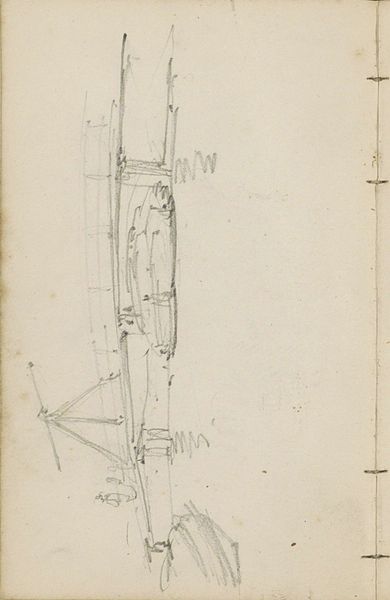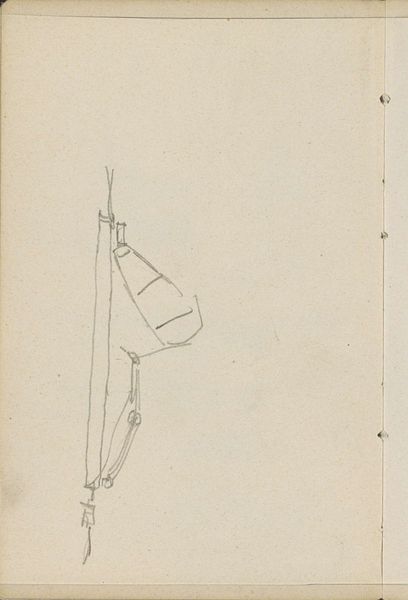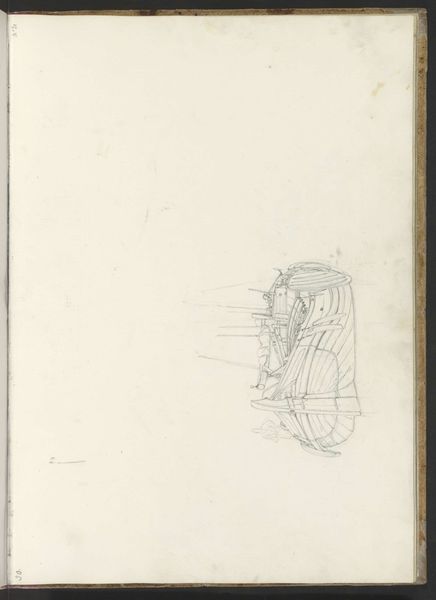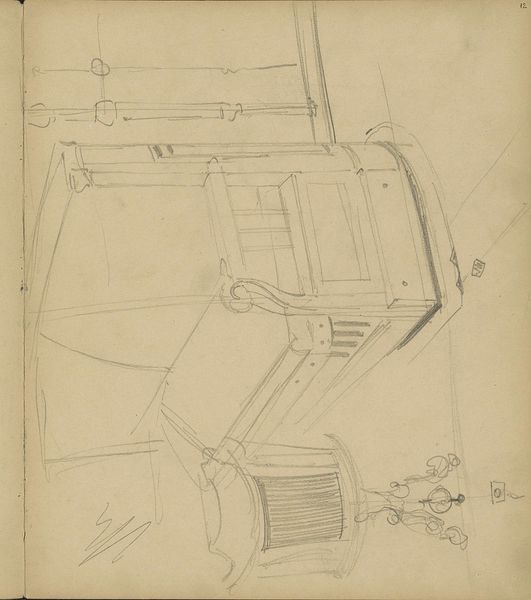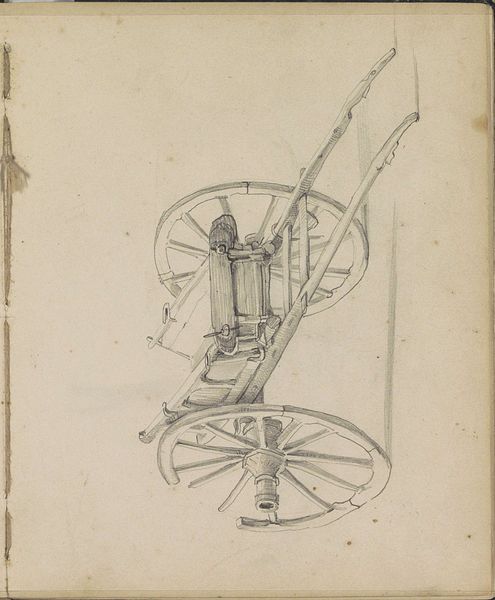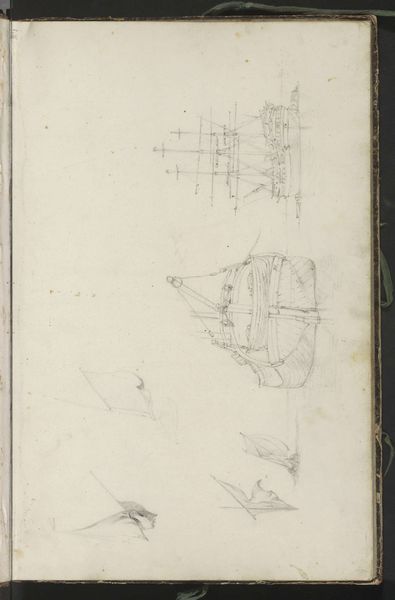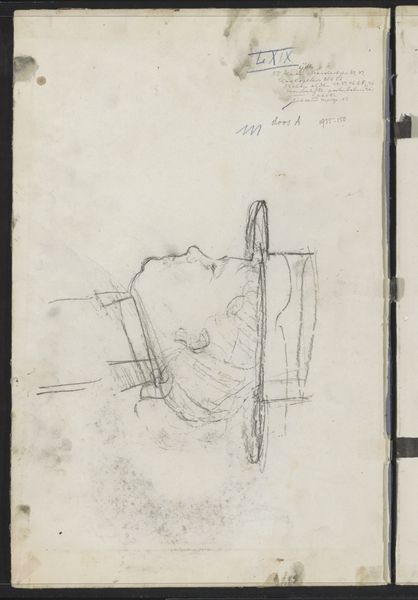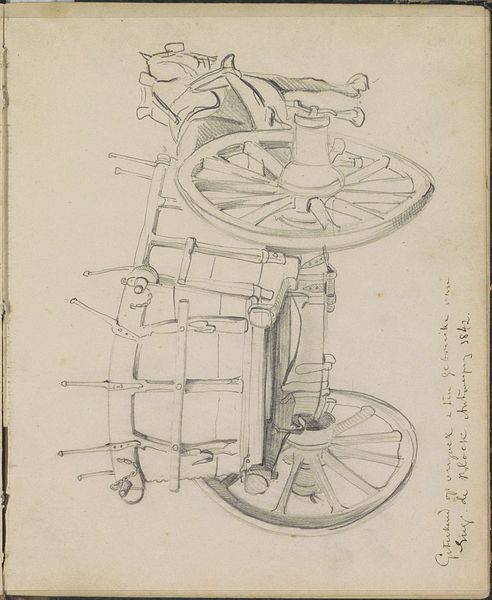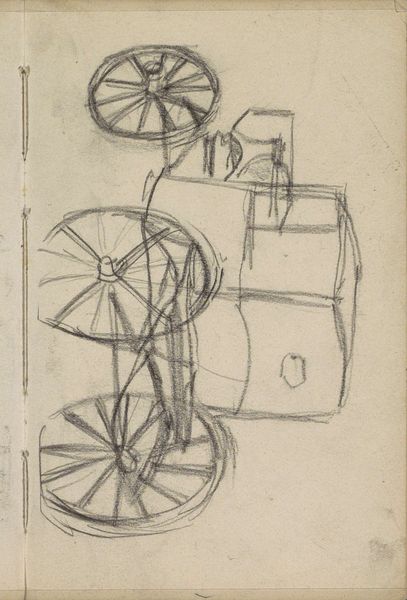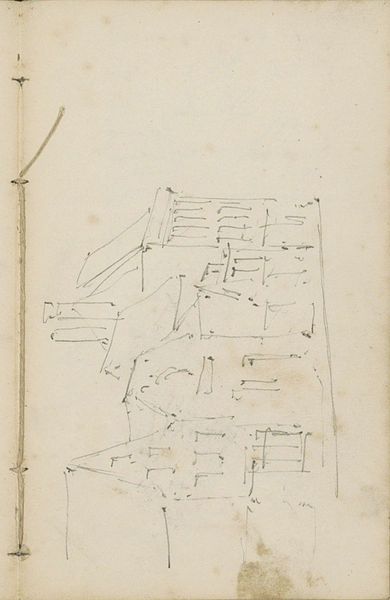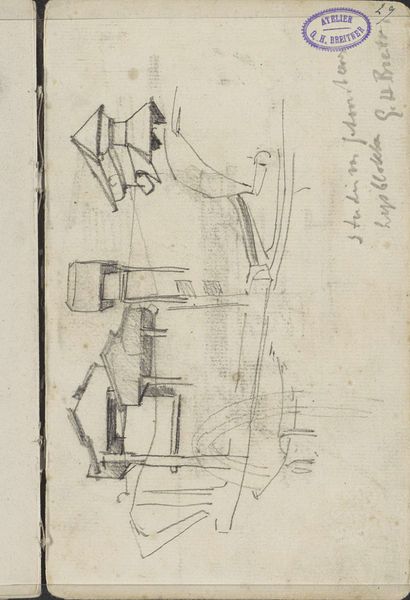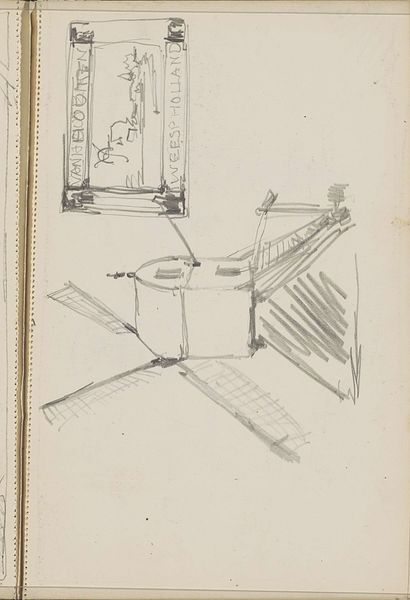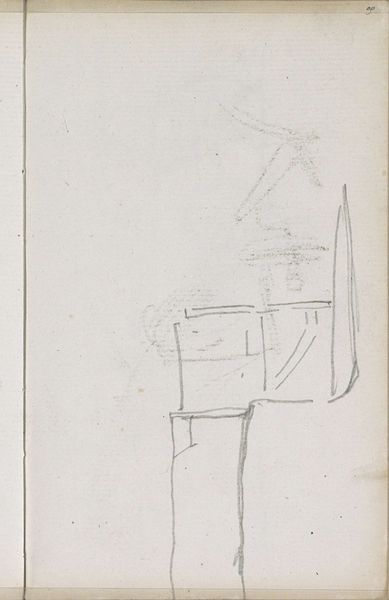
drawing, pencil
#
drawing
#
light pencil work
#
quirky sketch
#
sketch book
#
personal sketchbook
#
idea generation sketch
#
sketchwork
#
geometric
#
sketch
#
pencil
#
sketchbook drawing
#
storyboard and sketchbook work
#
sketchbook art
#
realism
#
initial sketch
Copyright: Rijks Museum: Open Domain
Curator: Immediately, it feels like a secret glimpse into an artist’s thought process, doesn’t it? The drawing, or rather the sketch, is quite skeletal and a bit humorous. Editor: Indeed! We are looking at a pencil drawing titled "Koets," made sometime between 1849 and 1895. The artist is Willem Koekkoek, and the work is currently held at the Rijksmuseum. For me, there's something very potent in the way this sketch shows preliminary thoughts about this antiquated horse-drawn vehicle... and perhaps about the social disparities represented through different modes of transportation across class lines at the time it was made. Curator: Class lines visualized through the future presence or absence of carriage suspension! Maybe! What's particularly captivating about this sketch is the sheer immediacy. It's like we’re witnessing Koekkoek wrestling with form and perspective in real time. See how he suggests the wheel's circularity with only a few wisps of a line? It’s so efficient and yet full of suggestion. Editor: And there's a socio-economic implication embedded even within what might be perceived as formal experimentations in sketches from the 19th century. Think about it: the economic engines that drove technological development, imperial expansion and the maintenance of hierarchical structures would impact decisions about who owned, designed, manufactured, used, or depicted different versions of vehicles. Curator: Precisely! It prompts a reflection on what sketches meant to artists of the era. This one feels almost rebellious. It isn't polished or pretty, it is utilitarian, it is raw and alive. We're peeking behind the curtain into an arena where ideas are volatile and unformed. He might have been capturing not just form and movement, but also the cultural significance the Koets, the carriage, represented at the time. The light pencil work certainly invites interpretation. Editor: In any case, looking at "Koets," I'm reminded how objects carry within them loaded social histories. Koekkoek might not have consciously been registering his understanding about power and mobility; still, he and others undoubtedly moved within societies stratified and shaped by those concerns. I feel like I gain access to questions of power and its effect on individual lives, while looking at this image today. Curator: Ultimately, I feel like I can now imagine more readily all the thinking, the social context that existed, and which the artist brought to the production of his final artworks. Editor: For me, reflecting on a work like this allows us to expand how we appreciate art history.
Comments
No comments
Be the first to comment and join the conversation on the ultimate creative platform.
